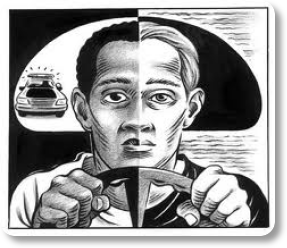
Back when there were various advanced nations conquering “new” lands, there was some sort of racism and racial profiling. For instance, when Central America and South America were being colonized by the Spanish conquerors, there was racism between how a person’s skin color determined who they were and where they stood on the social hierarchy. There were creoles, who were near the top because of their light skin and Spanish ancestry, and there were Mulattos, who were mixed and much lower in the social hierarchy than the creoles.
Similarly, in today’s modern and more open-minded world, that kind of racism and racial profiling still exists. To illustrate, many different races have something negative associated with them, whether that be shown through social media or the news. An example of this is the association between Islam and terrorism. Whenever a follower of Islam commits a vile act, he or she is instantly branded a “terrorist”. This does not seem unfair on its own; however, the problem arises when people on social media start to attack all Muslims. That one person’s actions does not represent an entire religion, especially when religions do not condone violence and harm. Another problem with this is when a non-Muslim person commits a similar act. The people on social media or the news do not brand that non-Muslim a “terrorist” simply because that person is not Muslim. A similar argument can be applied to when people differentiate among the various immigrants coming into the U.S., categorizing them. For example, countless people in the U.S. will claim that Mexican immigrants are “taking away jobs”, but this statement is rarely ever heard about immigrants coming from other countries that may live the same lifestyle as a Mexican immigrant. This explains how racial profiling still occurs in modern empires in today’s world.
One good thing that did come out of racial profiling, however, was affirmative action. This act lowered the bar for people of color in the U.S. to be able to get into colleges or receive a job. This has to do with racism because it brought to light the fact that Caucasians had a much higher advantage growing up than colored people, which gave them the upper hand in getting into a specific college or being chosen for a particular job. With affirmative action, colleges and employers had to make sure they accepted a certain number of colored people. This leveled the playing field, and ultimately allowed people of color to slowly become more equal to the Caucasians in the social hierarchy.
